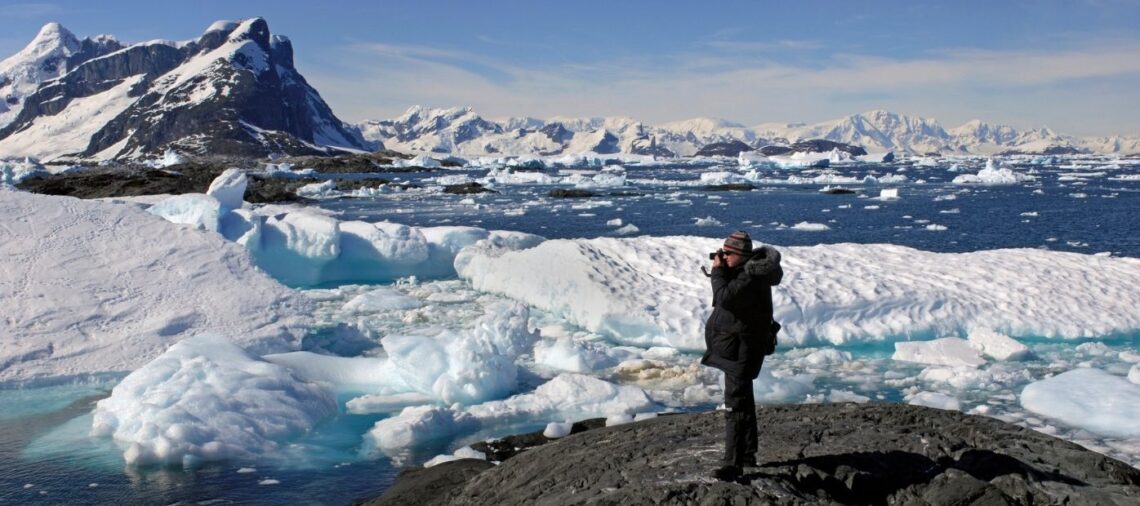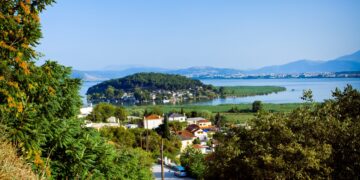Visiting Antarctica is a unique adventure that needs careful planning. Since the 1950s, tourists have been exploring this frozen continent. Now, there are strict rules to protect this untouched land.
The first cruise ship, MS Explorer, started in 1969. Knowing what not to do is key to keeping Antarctica safe. This helps ensure that tourism is done responsibly.
The Antarctic Treaty System calls this continent a natural reserve. It has strict rules for visitors. These rules are not just suggestions but are essential to protect this fragile place.
Key Takeaways
- Respect strict environmental protection protocols
- Minimize human impact on Antarctic wildlife
- Follow designated landing and travel guidelines
- Prioritize preservation of scientific research areas
- Understand the unique challenges of Antarctic expeditions
Understanding Antarctica’s Unique Climate
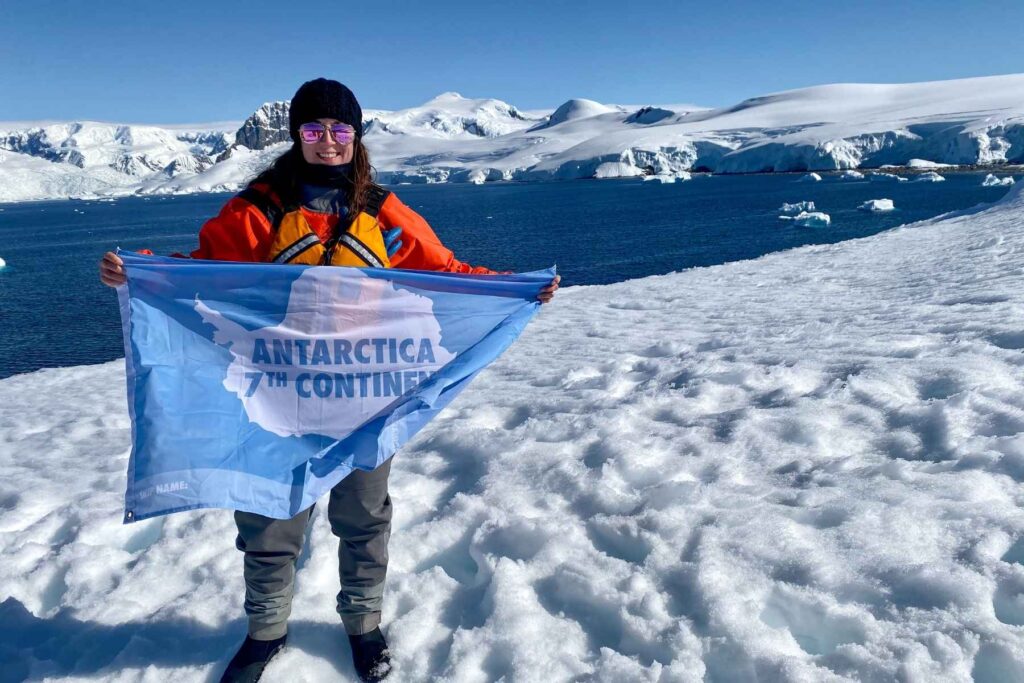
Antarctica is a place of extreme cold, wind, and height. It’s the coldest, windiest, and highest continent on Earth. Travelers need to be well-prepared and respectful to enjoy this unique environment.
“Antarctica is not just a destination, it’s a harsh wilderness that demands total environmental awareness.” – Antarctic Research Scientist
Antarctica’s average height is 2,000 meters, with huge ice sheets covering most of it. The East Antarctic Ice Sheet is about 10 million square kilometers. This makes it tough for tourists to explore.
Only a small part of Antarctica is not covered in ice. This area is called nunataks. They are tiny rock formations that stick out from the ice.
The climate in Antarctica is very dry and cold. It gets less than 50mm of rain a year. The humidity can drop to 0.03%. Temperatures can go as low as -89.2°C.
To visit Antarctica responsibly, you need to know about its climate. Follow the rules and prepare well. This keeps you safe and helps protect the environment.
Essential Gear for Antarctic Expeditions
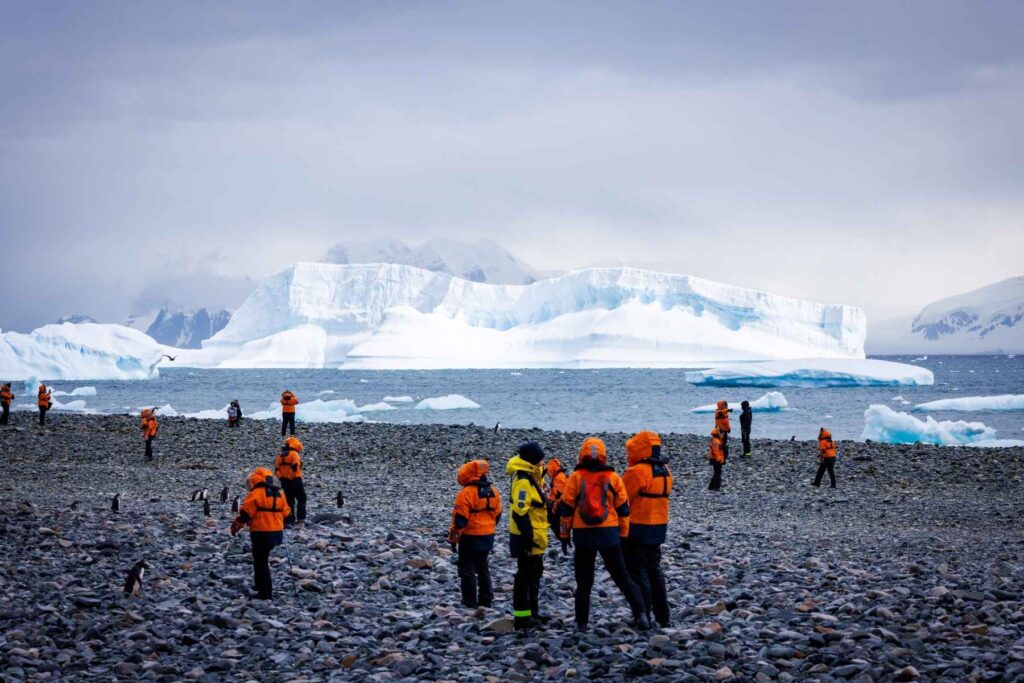
Getting ready for an Antarctic trip means careful planning and the right gear. Travelers must follow strict packing rules to ensure they have everything for the extreme weather. With a luggage limit of about 50 pounds (23kg), choosing your items wisely is key.
“Packing smart is more important than packing heavy in Antarctica’s unforgiving environment.”
Choosing the right gear is crucial for protecting the Antarctic environment. Merino wool clothing is a standout choice. It’s versatile and keeps you warm for up to 10 days without washing.
Important items include waterproof outer layers, knee-high rubber boots, and a layering system. Your base layer should keep you dry, the middle layer insulates, and the outer layer guards against wind and moisture. Many operators provide waterproof boots, which can cut down on what you need to pack.
Don’t forget about the tech side of things. Bring electrical adapters for European and Argentinian plugs, and opt for lightweight, multi-use electronics. Sunscreen is also essential, as the sun’s rays can be strong during the long summer days.
Rental options are available in places like Ushuaia for waterproof jackets, backpacks, and trekking gear. This helps reduce your environmental impact and supports sustainable travel.
Common Mistakes in Cold Weather Clothing
Getting ready for an Antarctic trip means picking the right clothes carefully. Many people make big mistakes when choosing their cold weather outfits. Knowing what not to do in Antarctica can keep you safe and comfortable in this tough place.
“Proper layering is your first defense against Antarctic’s harsh conditions” – Antarctic Expedition Experts
One big mistake is not valuing moisture-wicking base layers enough. Cotton gets wet and cold quickly. Choose synthetic or wool instead, as they keep you dry. Guides say to have two base layers: one to wear and one to dry.
Having a waterproof outer shell is a must for safe travel in Antarctica. Your outer layer should keep out wind, snow, and moisture. Most trips include a polar parka, but don’t forget waterproof trousers. Look for boots that go up to mid-calf and keep your feet warm.
Managing your socks is key when traveling to Antarctica. Bring thin liner socks and thick wool hiking socks. Change them often to avoid wet feet and frostbite. Experts suggest bringing six pairs of liner socks and four pairs of wool socks for longer trips.
Choosing the right clothes is crucial for a safe Antarctic adventure. Focus on layering, keeping dry, and staying warm. These strategies will help you survive the harsh conditions.
Importance of Hydration and Nutrition
Surviving in Antarctica’s extreme environment is all about staying hydrated and well-nourished. Travelers must understand the unique challenges of staying healthy in this harsh landscape. Historical expeditions teach us the importance of nutrition in polar regions, where it can be a matter of life and death.
“Nutrition is not just about eating – it’s about survival in the world’s most challenging environment.” – Antarctic Expedition Expert
Safe Antarctic expedition planning means knowing your body’s nutritional needs. The extreme cold requires more calories than normal conditions. Pack energy-dense foods for quick and sustained energy. Protein-rich snacks, high-calorie nuts, and dried fruits are key survival tools.
Hydration is a big challenge for Antarctic tourists. Despite being surrounded by ice and snow, dehydration is a serious risk. The dry, cold air speeds up moisture loss, making water intake crucial. Drinking water often, even when not thirsty, is recommended. Electrolyte supplements help maintain body balance in these conditions.
Modern Antarctic expeditions have made great strides from early explorers’ struggles. Today, travelers can access planned meal services and nutritional support. By following responsible tourism practices, adventurers can safely enjoy this incredible wilderness while staying healthy and energized.
Avoiding Frostbite and Hypothermia
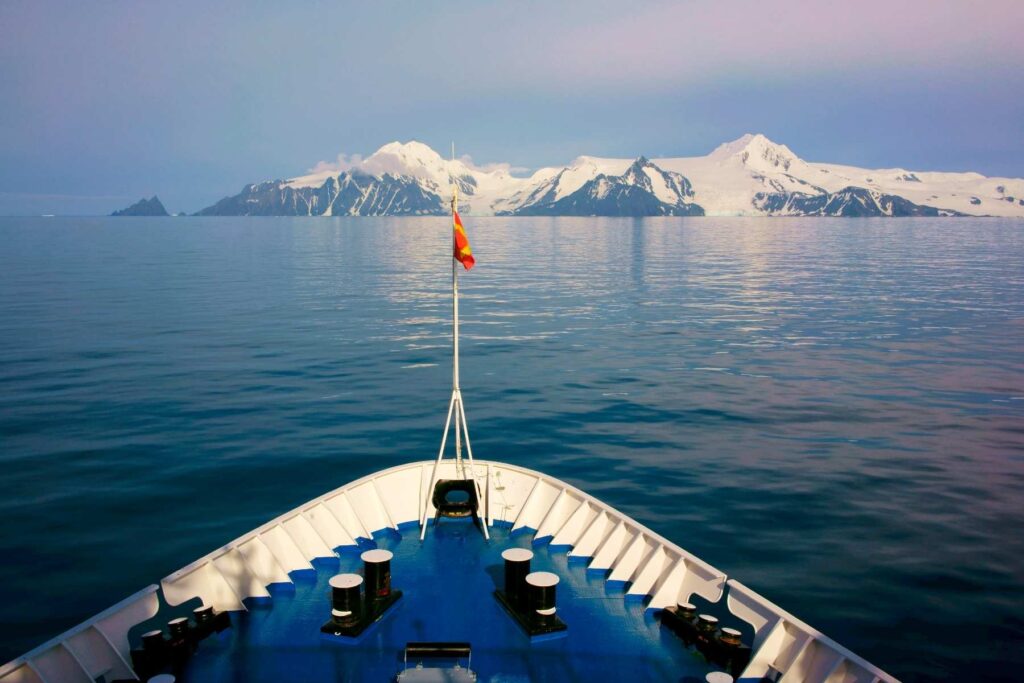
Antarctic expeditions require extreme caution against cold injuries. It’s vital to know about frostbite and hypothermia risks. Temperatures can drop fast, changing in under 10 minutes, so being prepared is key.
“In Antarctica, your survival depends on knowledge and prevention” – Antarctic Exploration Safety Guide
Frostbite is a big threat when it’s colder than -20°C (-4°F). Without the right protection, tissue damage can happen in minutes. About 10% of frostbite cases without treatment can lead to severe problems, even amputation.
Early signs of hypothermia include a lot of shivering, feeling very tired, and being confused. Around 30% of people on expeditions have had hypothermia symptoms. If your body temperature falls to 95°F (35°C), it’s a medical emergency.
Don’t underestimate the medical risks when visiting Antarctica. Medical help can take up to 72 hours to arrive. It’s important to see a doctor 6-8 weeks before your trip and know the limited medical options.
To prevent problems, wear lots of layers, drink plenty of water, and listen to your body. Wearing the right eyewear is also crucial. Since 85% of UV radiation bounces off snow and ice, it increases the risk of snow blindness.
Always put safety first, follow your guide’s advice, and don’t overestimate your abilities in such a harsh environment.
Wildlife Interaction Guidelines
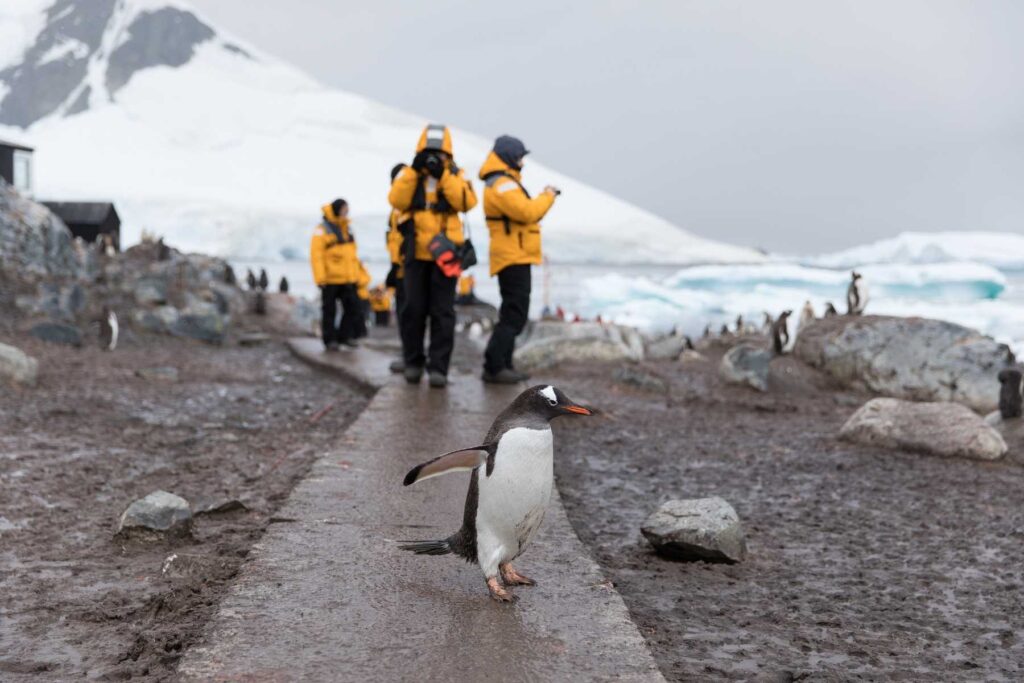
Exploring Antarctica requires great respect for its ecosystem. It’s important to interact carefully with the unique animals. The International Association of Antarctica Tour Operators (IAATO) offers key guidelines for wildlife protection during trips.
“Observe from a distance, respect their space, and never interfere with natural behaviors.” – IAATO Wildlife Principle
Responsible tourism starts with knowing strict rules for wildlife viewing. Visitors must stay at least 5 meters (16 feet) away from animals. During breeding seasons, this distance should be even bigger to avoid stressing animals. About 20 million penguin pairs live in Antarctica, so watching them carefully is essential.
Important guidelines for interacting with wildlife include:
- Avoid sudden movements or loud noises
- Never attempt to touch or feed animals
- Limit group sizes to 20 people when viewing wildlife
- Immediately move away if an animal changes behavior
Antarctica etiquette also asks visitors to disinfect clothes and gear before and after seeing animals. This helps prevent diseases and keeps the ecosystem safe. By following these rules, travelers can have amazing wildlife experiences while protecting Antarctica’s nature.
Managing Waste Responsibly in Antarctica
Eco-friendly travel in Antarctica means showing deep respect for its untouched beauty. The continent’s fragile ecosystem demands strict waste management rules. These rules help protect its unique environment.
“Leave nothing but footprints, take nothing but memories” – Antarctic Conservation Principle
Protecting Antarctica starts with removing all waste. Tour operators now follow strict waste rules. They sort and send waste back home, recycling as much as they can.
Travelers need to reduce waste themselves. This means avoiding single-use plastics and choosing reusable items. The International Association of Antarctica Tour Operators (IAATO) encourages travelers to leave a small environmental footprint.
Important waste management steps include:
• Removing all waste
• Using biological sewage systems
• Burning organic waste
• Avoiding harmful imports
• Recycling whenever possible
By following these steps, visitors help keep Antarctica beautiful for the future.
Conclusion – What Not to Do When Visiting Antarctica
Visiting Antarctica requires great care and responsibility. It’s important to know the rules set by the International Association of Antarctica Tour Operators (IAATO). This helps protect the fragile ecosystem of this untouched land.
When you visit, it’s not just about following rules. It’s about respecting the wildlife and keeping the environment safe. Always keep a safe distance from animals like penguins, seals, and whales. This helps them live naturally without human disturbance.
Protecting Antarctica’s environment is more than just watching wildlife. You need to be ready for harsh weather and have the right insurance. The remote location and lack of medical help mean you must be well-prepared.
Every visitor plays a key role in preserving Antarctica. By following the rules and choosing eco-friendly tours, you help protect this special place. Your trip is not just an adventure but a way to care for our planet.
FAQ
Do I need special permission to visit Antarctica?
Yes, you need permits to visit Antarctica. These are managed through the Antarctic Treaty System. Most tourists go with authorized tour operators. They handle the paperwork and ensure you follow environmental rules.
What’s the best time of year to visit Antarctica?
The best time is from November to March. This is the Antarctic summer. December to February is the peak, with warmer temperatures and more wildlife.
How cold does it actually get in Antarctica?
Summer temperatures range from 14°F to 35°F (-10°C to 2°C). But, wind chill can make it feel colder. Coastal areas are warmer than the interior. Always be ready for extreme weather.
What clothing should I pack for an Antarctic expedition?
Wear layers of moisture-wicking, insulating clothes. Include a waterproof shell, thermal base layers, and fleece mid-layers. Don’t forget waterproof pants, insulated boots, and warm socks. Gloves and a hat are essential. Cotton is not good because it holds moisture.
How can I minimize my environmental impact?
Follow Leave No Trace principles. Take out all trash, don’t remove natural objects, and stay on paths. Keep a safe distance from wildlife and avoid single-use plastics. Always listen to your guide about protecting the environment.
Are there any restrictions on wildlife interactions?
Yes, there are strict rules. Keep at least 15 feet away from wildlife. Never feed them, avoid camera flash, and don’t block their paths. Drones are not allowed to disturb the animals.
What medical preparations should I make?
Get a medical check-up before you go. Make sure you have travel insurance that covers emergencies. Bring any medications you need and be aware of limited medical facilities. Vaccinations for common travel illnesses are a good idea.
How expensive is an Antarctic expedition?
Trips can cost from ,000 to ,000 for 10-14 days. This includes transportation, accommodations, guides, and equipment. You’ll also need to budget for personal gear and insurance.
What communication options exist in Antarctica?
Satellite phones and some internet are available on ships. But, it’s expensive and unreliable. You’ll have limited contact with the outside world. Prepare for a digital detox.
How physically fit do I need to be?
You don’t need to be an athlete, but some fitness is necessary. You’ll walk on uneven terrain, do zodiac landings, and explore for long days. Aim to walk 2-3 miles on varied terrain.
Photos: Canva Pro


